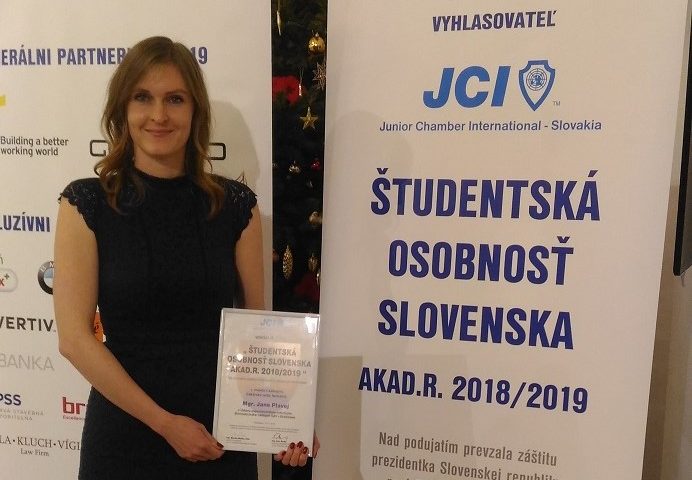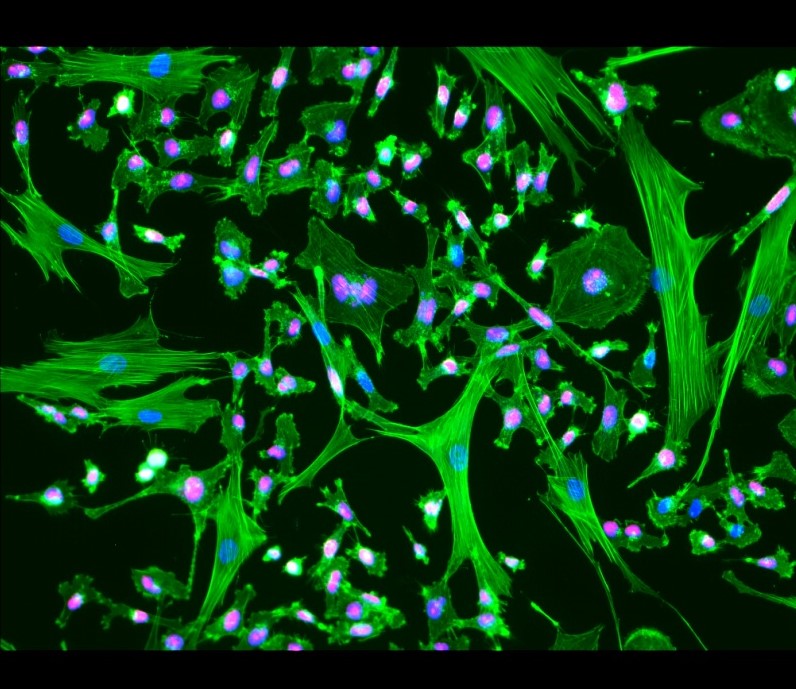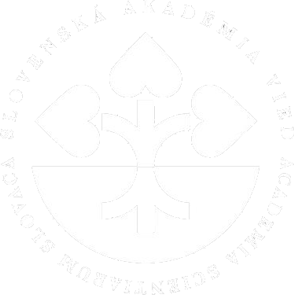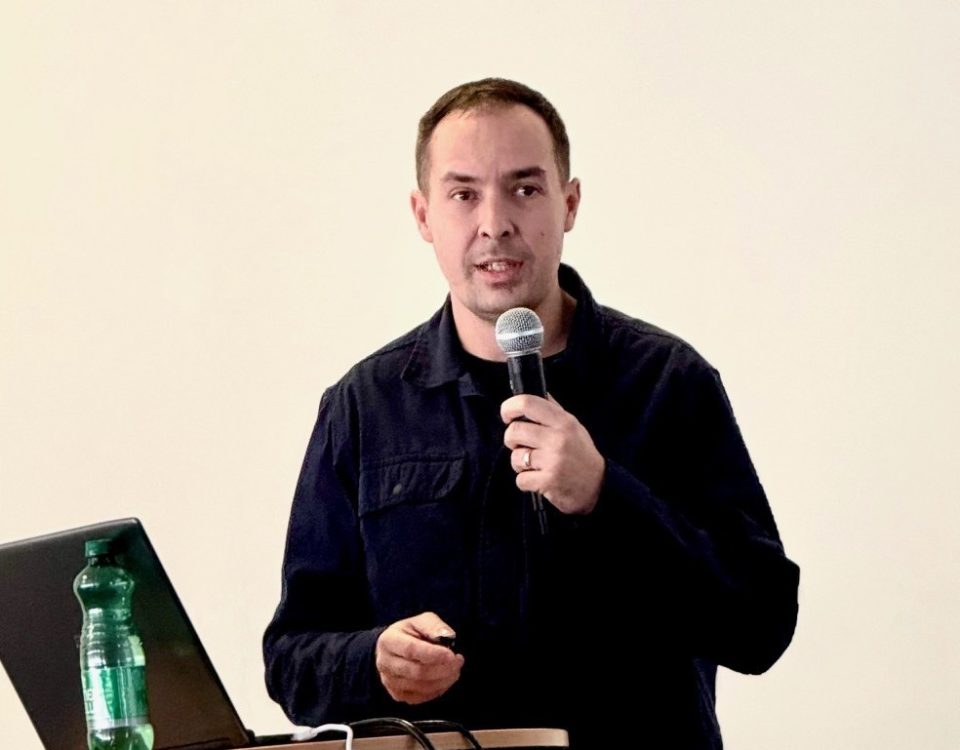This website uses cookies so that we can provide you with the best user experience possible. Cookie information is stored in your browser and performs functions such as recognising you when you return to our website and helping our team to understand which sections of the website you find most interesting and useful.
Effects of adipose tissue in breast cancer

Janka Plavá
Breast cancer research is the main area of interest of Jana Plava, a recent winner of “Student Personality of Slovakia Award for the academic year 2018/2019” in the category Medical Sciences and Pharmacy”. Jana Plava is a member of Svetlana Miklikova’s lab where she studies the tumor microenvironment and its role in cancer progression, metastasizing, and chemoresistance.
Why did you decide to study breast tumors specifically? “This is one of the most frequent types of cancer. In fact, it is the most frequently diagnosed cancer in women, which also occurs in men, although less often”, said Jana Plava, a Ph.D. student at Department of Molecular Oncology of Cancer Research Institute, Biomedical Research Center SAS.
Tumor does not consist solely of the cancer cells. It is a complex tissue that includes a nonmalignant component called tumor microenvironment. Both malignant tumor cells and nonmalignant cells of the microenvironment participate on the tumor biology and in turn affect the response of tumor to the therapy. This makes the research of both components equally important. The microenvironment is composed of various types of cells surrounding the tumor, including tumor blood vessels, endothelial cells, immune cells, stroma cells, tumor-associated fibroblast and many more. The microenvironment of breast tumors is composed of adipose tissue. Due to the high incidence of this malignancy, the team collaborates with professor Mego from National Cancer Institute (NOU). Among other benefits, this collaboration allows them to study patient tissues, which greatly expands the complexity of their research.
Can you describe your research more specifically?
The resistance of tumor cells to chemotherapy has been one of the main problems of cancer therapy. It was shown that Mesenchymal Stromal Cells (MSC), which are found in breast adipose tissue are among the factors that mediate the resistance. This is one of the reasons why Jana Plava and her colleagues aim their research efforts on this type of cells.
“In healthy person these cells are capable to migrate into the site of tissue damage and participate on the repair processes. However, if a tumorigenesis occurs in the body, they are also capable to migrate into these tumor sites and become their important component. Such MSC migration is mediated by the various molecular signals emitted by cancer cells. The communication between cancer cells and cells of microenvironment is therefore crucial for tumor growth, metastasizing and response to therapy. This communication is very complex and only partially understood, therefore unravelling of these processes may help us to better understand tumor physiology and the processes leading to therapy resistance. All-in-all the study of these phenomena may eventually help us to develop novel approaches to tumor therapy”, said Jana Plava about her research.

Z fluorescenčného mikroskopu – bunky s modrým jadrom sú MSC a bunky s červeným jadrom sú prsníkové nádorové bunky. Fotka demonštruje vzájomnú komunikáciu buniek. / Communication between MSC (blue nucleus) and breast cancer cells (red nucleus).
Interesting new observations
The comparison of MSC isolated from tumor-associated adipose tissue and from the adipose tissue of healthy individuals revealed that the tumor-associated MSC (both found in close proximity of tumor as well as those located several centimeters away from the tumor) show permanent changes in multiple features. This suggested that it is necessary to identify the molecules and mechanisms responsible for chemoresistance. Several differences were specified that distinguish the naïve MSC that were never exposed to chemotherapy (and therefore cannot mediate resistance) from those, which were previously exposed to it. The current research efforts are aimed at identification of these differences and the identification of specific molecules participating on these processes. The detailed description of the molecular pathways that play a role on chemoresistance may be a first step in designing the targeted treatment of therapy-resistant cancers. Such therapy would target and inhibit resistance-associated pathways and would help to eliminate or at least postpone the onset of chemoresistance in breast cancer patients.
“This is very complex problematics and will require a lot of effort. However, I firmly believe that this project may provide answers to many scientific questions and thereby ultimately bring benefits for cancer patients”, concluded Jana.







